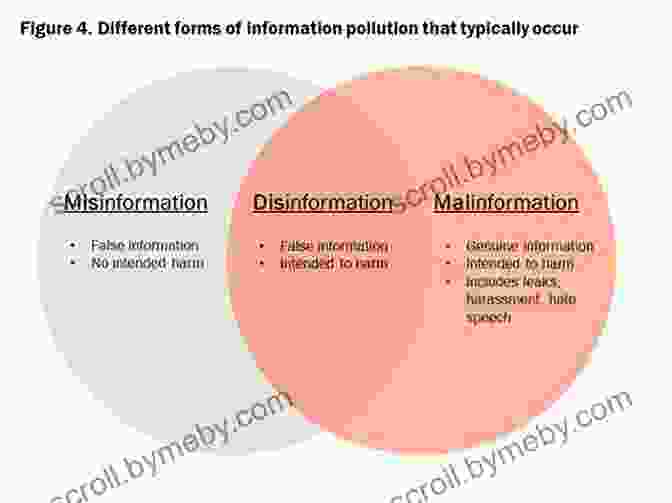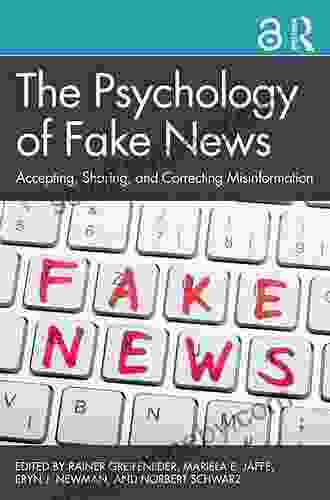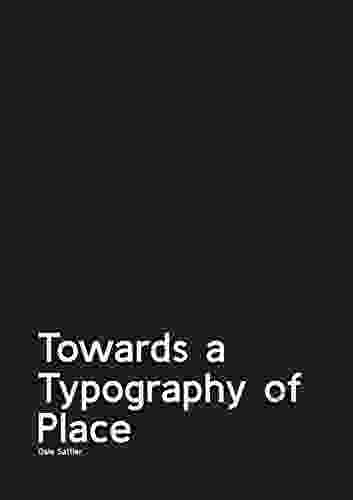Accepting, Sharing, and Correcting Misinformation: A Comprehensive Guide to Navigating the Digital Age

In the vast expanse of the digital realm, where information flows freely and unchecked, misinformation has become a pervasive threat. It distorts our perceptions, undermines trust, and can have far-reaching consequences. To navigate this treacherous terrain effectively, we must develop a keen understanding of how misinformation spreads, how to identify it, and most importantly, how to correct it.
Understanding the Spread of Misinformation
Misinformation thrives in environments where unchecked information can proliferate rapidly. Social media platforms, with their vast networks and algorithms that prioritize engagement over accuracy, have become particularly fertile ground for its spread. The anonymity of the online space further emboldens individuals to share misleading or inaccurate content without fear of repercussion.
4.5 out of 5
| Language | : | English |
| File size | : | 7962 KB |
| Text-to-Speech | : | Enabled |
| Screen Reader | : | Supported |
| Enhanced typesetting | : | Enabled |
| Word Wise | : | Enabled |
| Print length | : | 252 pages |

The psychology of human behavior also plays a significant role in the spread of misinformation. We tend to seek information that confirms our existing beliefs, a phenomenon known as confirmation bias. This makes us more susceptible to accepting and sharing content that aligns with our worldview, even if it is inaccurate.
Identifying Misinformation
Recognizing misinformation can be a challenging task, especially in a world where fabricated content is often presented as genuine. However, there are several key indicators that can help us identify misleading information:
- Emotional language: Misinformation often appeals to our emotions, using sensational or fear-mongering headlines to grab attention.
- Lack of sources: Credible information is typically supported by reliable sources, such as reputable news organizations, scientific studies, or expert opinions. If a piece of content lacks clear references, it should be treated with caution.
- Contradictory information: When encountering conflicting reports or claims, cross-reference them with credible sources to determine which information is most accurate.
- Unverified accounts: Be wary of information shared by anonymous or unverified accounts, particularly on social media platforms.
Correcting Misinformation
Combating the spread of misinformation requires a collective effort. Here are some effective strategies for correcting inaccurate information:
- Share accurate content: When you encounter misinformation, share credible information from reliable sources to counterbalance the false narrative.
- Engage in respectful dialogue: If you engage with someone who is sharing misinformation, approach them with empathy and respect. Try to understand their perspective and provide evidence-based counterarguments.
- Report misinformation: Most social media platforms have reporting mechanisms to flag misleading or inaccurate content. Use these features to report misinformation so that it can be removed or marked as false.
- Support fact-checking organizations: Fact-checking organizations play a vital role in identifying and debunking misinformation. Support their work by following them on social media, donating to their cause, or using their resources to verify information.
- Be skeptical and critical: Cultivate a healthy skepticism towards information you encounter online. Always question the source, consider multiple perspectives, and seek verification from credible authorities.
Additional Resources
- FactCheck.org
- Snopes.com
- PolitiFact
- Media Bias/Fact Check
- News Literacy Project
In the digital age, navigating the treacherous waters of misinformation requires a proactive approach. By understanding the spread of misinformation, identifying it, and correcting it, we can collectively contribute to a more informed and responsible online environment. Remember, the responsibility to combat misinformation lies not solely with experts or authorities but with each and every one of us. Together, we can promote a culture of truth and accuracy, safeguarding ourselves and future generations from the damaging effects of misinformation.
4.5 out of 5
| Language | : | English |
| File size | : | 7962 KB |
| Text-to-Speech | : | Enabled |
| Screen Reader | : | Supported |
| Enhanced typesetting | : | Enabled |
| Word Wise | : | Enabled |
| Print length | : | 252 pages |
Do you want to contribute by writing guest posts on this blog?
Please contact us and send us a resume of previous articles that you have written.
 Book
Book Novel
Novel Page
Page Chapter
Chapter Text
Text Story
Story Genre
Genre Reader
Reader Library
Library Paperback
Paperback E-book
E-book Magazine
Magazine Newspaper
Newspaper Paragraph
Paragraph Sentence
Sentence Bookmark
Bookmark Shelf
Shelf Glossary
Glossary Bibliography
Bibliography Foreword
Foreword Preface
Preface Synopsis
Synopsis Annotation
Annotation Footnote
Footnote Manuscript
Manuscript Scroll
Scroll Codex
Codex Tome
Tome Bestseller
Bestseller Classics
Classics Library card
Library card Narrative
Narrative Biography
Biography Autobiography
Autobiography Memoir
Memoir Reference
Reference Encyclopedia
Encyclopedia R L Walker
R L Walker Conway X Bowman
Conway X Bowman Mike Yamada
Mike Yamada Jessica Holmes
Jessica Holmes Cynthia Downer
Cynthia Downer Cynthia Winton Henry
Cynthia Winton Henry Cosimo Yap
Cosimo Yap Meghan Scott Molin
Meghan Scott Molin Craig Payne
Craig Payne Reviel Netz
Reviel Netz Craig Caudill
Craig Caudill Phil Berger
Phil Berger David Hillson
David Hillson Bonnie Bley
Bonnie Bley Clodagh Dunlop
Clodagh Dunlop Will Duffy
Will Duffy Clifford Herriot
Clifford Herriot Jens Beckert
Jens Beckert Craig Johnson
Craig Johnson Colonial Williamsburg Foundation
Colonial Williamsburg Foundation
Light bulbAdvertise smarter! Our strategic ad space ensures maximum exposure. Reserve your spot today!

 Kyle PowellDelve into the Enchanting Past of History of Casino De Paris: An Intriguing...
Kyle PowellDelve into the Enchanting Past of History of Casino De Paris: An Intriguing... Alvin BellFollow ·8.5k
Alvin BellFollow ·8.5k George Bernard ShawFollow ·14.1k
George Bernard ShawFollow ·14.1k Alex FosterFollow ·14.5k
Alex FosterFollow ·14.5k Albert CamusFollow ·5.2k
Albert CamusFollow ·5.2k Brady MitchellFollow ·17.8k
Brady MitchellFollow ·17.8k Fernando PessoaFollow ·17.7k
Fernando PessoaFollow ·17.7k Vladimir NabokovFollow ·8k
Vladimir NabokovFollow ·8k Jack PowellFollow ·18.6k
Jack PowellFollow ·18.6k

 Cruz Simmons
Cruz SimmonsUnveiling the Secrets: An Insider Guide to School Bonds...
Unlock the Power of School...

 Gil Turner
Gil TurnerRuins of Empire: Blood on the Stars - The Epic Space...
Ruins of Empire: Blood on the Stars is the...

 Allen Ginsberg
Allen GinsbergPrepare for the Ultimate Space Opera: Delve into The Last...
Embark on an...

 Anton Foster
Anton FosterUnleash Your Inner Artist: The Ultimate Guide to Oil...
Chapter 1: The...
4.5 out of 5
| Language | : | English |
| File size | : | 7962 KB |
| Text-to-Speech | : | Enabled |
| Screen Reader | : | Supported |
| Enhanced typesetting | : | Enabled |
| Word Wise | : | Enabled |
| Print length | : | 252 pages |













